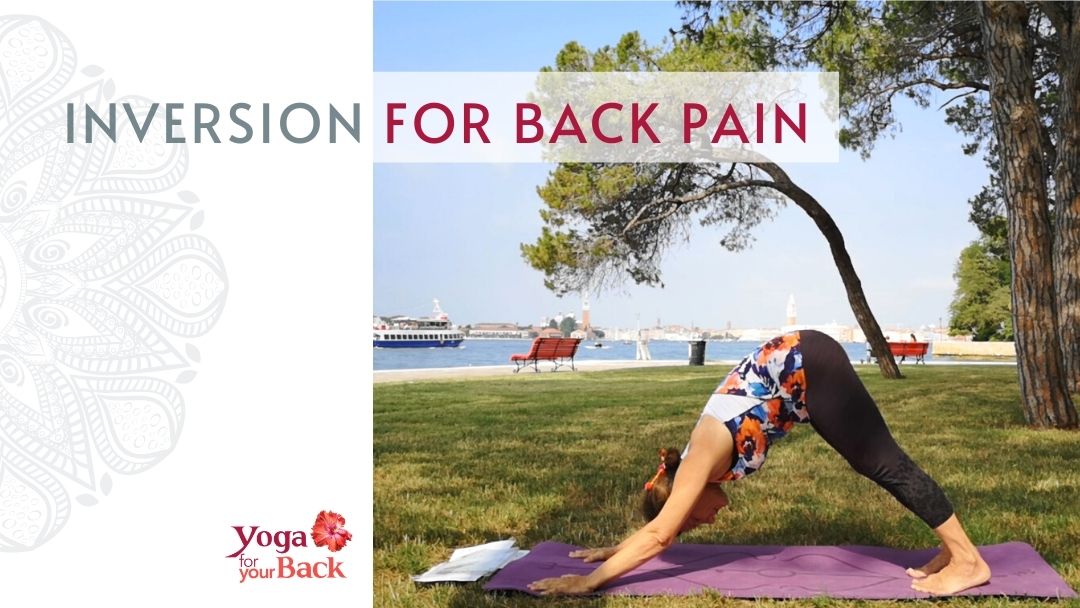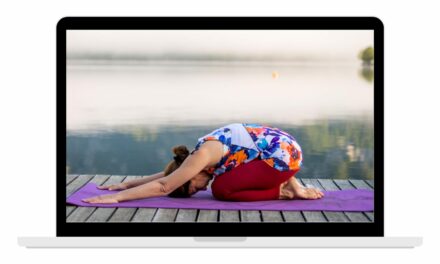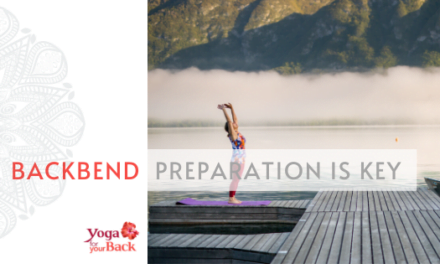Relieve back pain with Inversion Poses
Inversion poses in Yoga means the heart is placed higher than the head. An other common point to all inversion poses is your head being aligned with your spine, which makes inversions ideal yoga poses for back pain. With many variations to each pose, inversions are perfectly accessible to yoga beginners.
Table of Contents
How to do Inversion Poses?
You can come into inversion poses from standing position, by forward bending, your chest reaching towards the floor. Alternatively, from a kneeling position you push with feet and hands into the floor and lift your buttocks pointing towards the ceiling, called Downward Facing Dog.
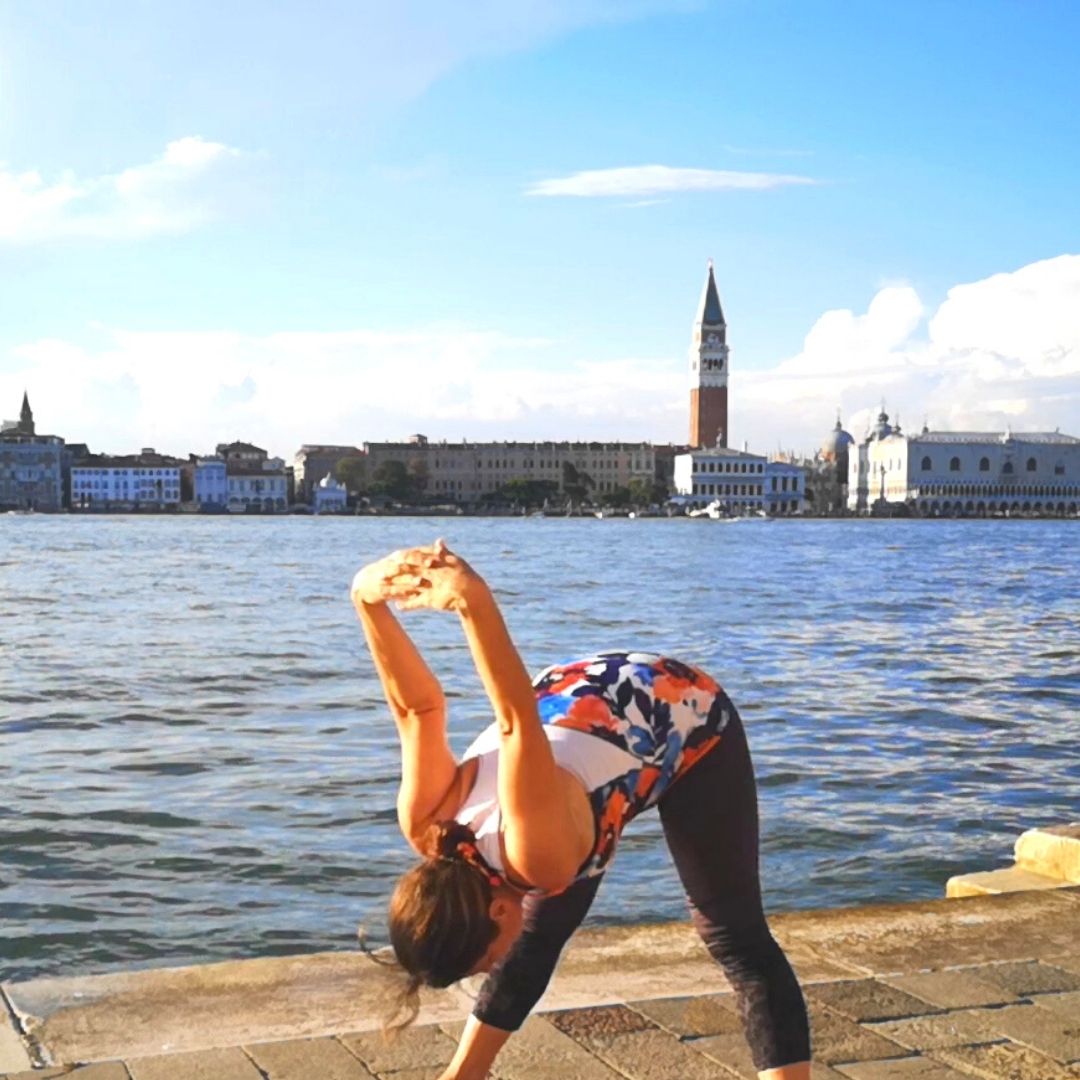
Another way to find an inversion position is laying on your back with feet on the floor close to buttocks. From here, you lift your hips into a half shoulder stand, called Bridge. To go higher, you lift your hips and legs, stretch your legs towards the ceiling and come to shoulder stand, called Candle. Attention: your neck is stressed in this pose, therefore go slowly, use variations with bent knees. Also, support your lower back with your hands, and never turn your head left or right in this inversion poses!
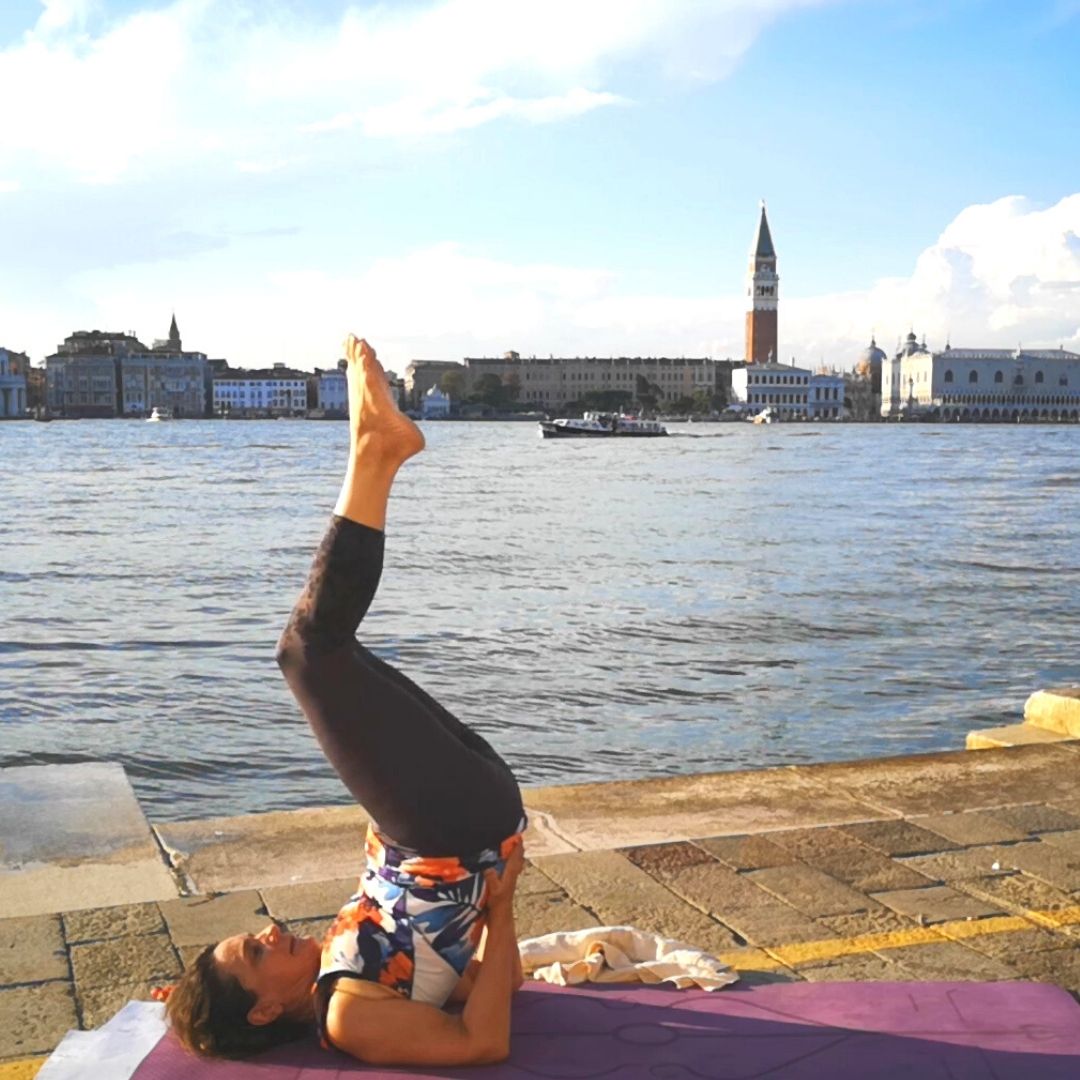
When should you not do inversion poses?
Risks of yoga inversions can be loss of balance and related accidents. Besides this, it is important being aware that going upside down initially increases the blood pressure, before lowering it later on. That’s why yoga inversions should not be practiced in case of high blood pressure or other severe heart condition. Women should avoid the practice of inversions like handstand during the first 3 days of menstruation and if they’re pregnant. As said before, in shoulder stand always keep your head aligned with your spine to avoid neck injuries (don’t watch the teacher or screen on your side, just listen).
For yoga inversions like headstand or candle pose, the core muscles are engaged to hold the pose, you thus first need building strength. If you just start a regular training including your muscles, you’re building a very good basis for practice of advanced yoga inversions within a couple of months.
What are the benefits of Inversion poses?
The benefits of the poses vary depending on the inversions’ characteristics. Two main aspects are common to all yoga inversions:
Inversion of blood circulation – exhilarating and rejuvenating
Blood first flushes to head and neck. When you come back into your normal position, it recirculates back with fresh supply. This not only helps to relax and release tension from head and neck, but also the brain finds itself toned and enhanced, and you feel clear and fresh.
After the inversion, an elevating effect on your mood is revealing, a kind of exhilaration combined with light dizziness.
In every inversion with the legs placed higher than the heart, the venous return from the lower body and the lymph drainage is improved. Therefore, if you are standing on your feet all day and/or if you’re suffering from varicose veins, you will feel relief as stagnant blood drains from the lower extremities. Ladies, practicing Candle helps to keep legs smooth and healthy!
Inversion of skeletal system – relaxing and relieving
The second aspect lies in the change of bodily gravity for spine, limbs and organs. There’s no pressure on the lower back, hips and legs anymore, the diaphragm finds itself upside-down, and the abdominal organs also move differently, which leads to relief for indigestion, constipation and stomach troubles, a natural deep breath is installed and lungs are highly ventilated.
The heart is higher than the head:
You feel some effects immediately, as you go into the inversion pose, you relax and tune into observing your body and your breath. When you come out of the pose, you feel uplifted and exhilarated!
Here are two easy yoga inversion poses you can practice in your living room, to restore from an exhausting day and get your legs ready for the next spring!
Legs up the Wall (Viparita Karani)
The wall is a great inversion support for the legs and in return many parts of the body may relax completely.
How to
- Place a bolster or hard pillow against a wall.
- Sit sideways against the wall on this support. With one smooth movement, swing your legs up onto the wall and place your shoulders and head resting on the floor.
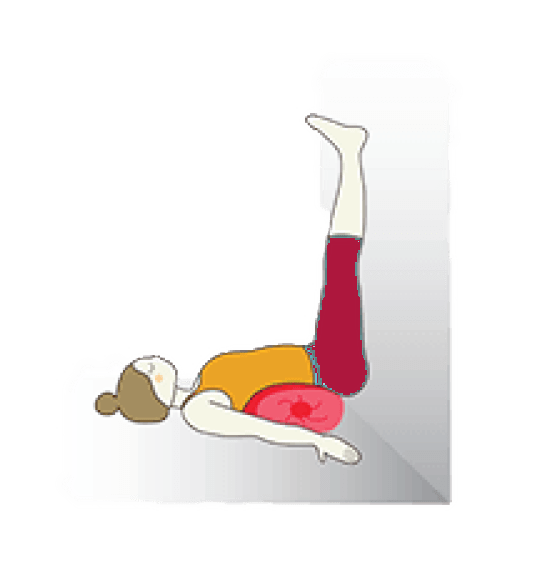
- Bend your knees, press your feet into the wall and lift your sacrum off the support a few centimeters to find the right posture, with your buttocks close to the wall or a few centimeters away. Then open your arms out to your sides, palms up.
- Bend the knees slightly, if it feels better. If you feel pain in your back or hamstrings, place your support further away from the wall.
Stay somewhere between 3 and 10 minutes.
When to place the legs up the wall?
Practicing yoga inversion gives relief to tired legs, hips and mind, it is thus recommended setting this posture
- near the end of the yoga practice or
- after running or
- after a long day standing on your legs or
- before sleeping
Legs up the Wall Benefits
- Relaxation for lower back as it experiences no pressure in this inversion pose. The stiffness around the muscles near the sacrum is reduced and mild backache relieved.
- Relaxation for neck and shoulders as there is no pressure on the shoulders or the neck, and ample space for right breathing is created.
- Relief for tired or cramped legs and feet and prevention of varicose veins
- Removes strain due to sciatic nerve
- Alleviates menstrual cramps and disorders or premenstrual symptoms. Practice is recommended any time except during the 3 first days of menstruation.
- Smoothens nervous system thanks to the supply of blood. This further calms the mind if the focus goes towards breathing deep while in this pose.
- Improves digestion, relieves diarrhea and nausea thanks to the fresh blood arriving to the abdomen.
Legs on Chair (Savasana Variation)
How to
- Lie on your back with hips close to a chair and rest your calves on the chair.
- Feel the whole back on the floor, with neutral spine (slight lordosis) or place a bolster or hard pillow under your hips.
- Arms along your body with palms facing upwards.
- Close your eyes. Stay 3 to 10 minutes.
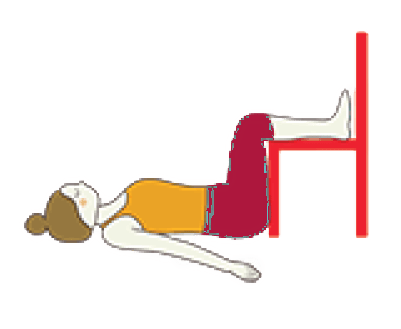
Legs on Chair Benefits
As the legs are placed on the chair and all the blood flows towards thighs and hips, calves and ankles get less blood. Once you release the legs and take them back down again, there is a flush of blood towards calves, ankles, feet, and also knees which keeps the muscles around active and fresh and improves healing in this area.
- Settles tired legs, also of runners and other athletes
- Improves the healing of injured feet or ankles like Achilles tendons
- Reduces the symptoms of Restless Leg Syndrome
- Gently relaxes body and mind
- Tonifies back
Conclusion
Inversion poses reverse gravity on blood circulation and skeletal system. Most inversions are yoga poses recommended for back pain. They are relaxing the abdominal belt, strengthening the heart, and helping to find a resistant nervous system, reviving the brain and providing good mood!
To avoid injuries of the neck area, be careful with the inversions where you place your body weight on your shoulders. Follow instructions or take advice with an experienced yoga teacher. Other yoga inversions like Legs up the wall or on a chair present fewer risks, however always do them mindfully, tuning in and listening to your body. Your pose is perfect if the effort to perform it is effortless, and you feel good.
Taking Action
Inversion poses are part of the program Yoga for your Back. For taking action and practising 30 minutes twice a week, have a look at the upcoming program. Try with a drop-in or free class (write to info@yoga40plus.com) and then start with a 4-week program, you’ll feel the change!

